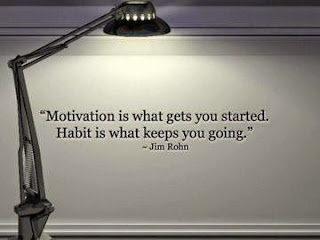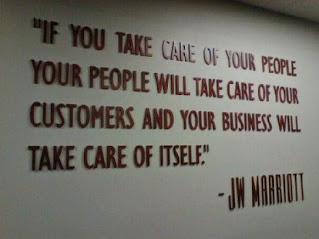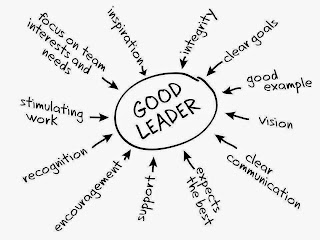Leading Transformational Change
Successful change in business, in fact any change, does not happen by accident. Happy accidents of good fortune can easily be undone by leadership teams focusing on measuring the wrong outcomes. One leaders' variation from the expected, is seen as an error, to another leader the same variation is innovation. That difference, maybe the difference, between success, and failure in business.
The Post-It Notes Example
Think about Dr Spencer Silver and his pressure-sensitive adhesive which he failed to succeed in promoting as "solution without a problem" but which Arthur Fry identified as very useful sticky pad useful for book marks and rebranded it "Press 'n Peel" and accidentally in the process picking yellow as its iconic colour. Even then, what we today know as "Post-It Notes" did not take off, it was only his passion and determination which led to them being given away as free samples in 1980, which led Post-It Nots winning a customer approval rating of 94% which ultimately guaranteed its success as a product. To many a glue which failed to stick has become an iconic office product that none of can imagine an office not having.Change is Painful BUT Vital
Change is always painful and for many organisations it is actively discouraged. Often it is not just ideas which are disregarded but also the people asking challenging questions, those who challenge the status quo, asking why we are doing something and why are we not doing something, are often labeled as loose cannon's within the organisation, or trouble maker's in today's politically correct world they are described as "off message".These people who ask awkward questions are seen as not towing-the-line, need to be re-educated or eradicated. The language used to describe those who seek to ask the most valuable and powerful questions in any organisation, the question "why" and "why not" often reflects the institutionalised nature of the organisation. People who ask this type of question are the voices of change from within organisations which leaders can either choose to listen to or not.
Leader's Must Look For Change
Leader's need to not to discourage people who challenge the organisational, but understand what the driving force behind those who challenge the status quo. The larger the organisation the harder it is to see change as hierarchy and multiple levels of engagement can cloud and confuse the ability of leader's to see and understand the drivers of change.For organisations to successfully compete they have a to change in response to, or to lead their market. For leaders' to achieve success within their market they have to look for where does tomorrow's growth come from and ensure that transformational change takes their organisation to where they need it to be to succeed.
In every market change is the only constant. Leaders can embrace it or defer it, but they can never ignore it, for any lengthy period of time. Change can be incremental in any sector or it can be revolutionary, how the leadership responds to that change not only reflects their comfort with dealing with transformation but more importantly how they see their organisation in the future. Those who defer transforming to meet changes find their position in a market sector often eroded through hesitancy of action and uncertainty of direction.
Transformational Baby Steps Create Tidal Waves
For transformation to happen in any organisation there has to be a will to change, driven either by desire to succeed or by fear of failure. The desire to achieve, a market position, turnover, profit, margin, efficiency or win certain customers is always the easier option for leaders to focus efforts upon, rather than being led forward in response to changes, transformation through fear, we do or we die!
Leader's Mindset
Leading transformational change is as much a mindset as is a process. It requires a mindset that says yes we can, as well as an understanding that moving people out of their comfort zone, their institutionalised state requires not only a visionary and passionate leadership but also baby steps, which everyone can take. If you are going to move an organisation first decide why then how before worrying about when. I work with leaders who always want to focus on creating a timescale to completion, to make it happen by, often led by the perception that momentum will solve every problem.The reality is that people are always willing to hear about transformation, the "I have a dream moment" (especially if they are part of an away day to an exotic location) but the reality of transformation is that it requires people to change their institutionalised ways, which while talk is cheap and (freely available) people are less keen to make change than to talk about it as some abstract future requirement. As Mark twain said "why put off tomorrow what you can put off to the day after". To make change happen often the most effective leadership tool is finding an effective baby step which moves people forward together, out of their comfort zone and enables leaders to see their people as they really are when it comes to change, a diverse group of individuals siting along an adoption curve.
The first step is often decisive in enabling leaders to move everyone forwards to a successful outcome, or in failing and being left with false starts and fragmented pieces of transformation, where some people and departments are somewhere else from others. The natural reaction to failing to transform everyone at the same time is to retake back to safety rather than push forward. Leader's must take all their people to somewhere new, not just the evangelists for change.

Successful transformation needs to be driven forward, either by the classic burning the bridge to prevent going backwards (removing the old system and its architecture so it cannot be used as comfort blanket / default option) or by restructuring the organisation so there is no memory or ability for the organisation to go back to.
Leader's Must Communicate and Champion Change
The leaders' ability to make change happen is paramount in communicating why change is necessary. This paradox is that for any successful organisation is that the need for change is not appreciated until after it has become a significant problem. In any market change only appears at the edges, those in the middle and doing well don't need to change, (unless their market is changing rapidly and they are used to it). In most markets leadership teams come into existence, develop and deploy their strategy and then manage that situation until the strategy wains and then they are replaced as failure to satisfy stakeholders drives them out of their role. This cycle of renewal, success and decay is why in many markets there are leaps forward in transformation as the leading brands ebb and flow in sync with each there, responding to the changing fortunes of the leading brands.In organisations or markets which are successful in transformation or where change is the only constant, then continual jockeying for position with new products and services enable continual transformation to be the normal state of affairs. In these sectors transformational leadership is the expected and the pressure is on to ensure that it continues not just as the status quo but happens in the right direction. In accelerating markets often change can outpace the ability of organisations to moneterise the changes they are making, which requires leaders to hold back changes so that transformation does not kill the company. If you move too fast you can outstrip the markets ability to expense the value of your brand. This can most commonly be seen in products where by the time it is made it is out of date, such as in IT programmes.
Change only happens when people change
Change happens not when processes change but when people change. Leaders need to remember that as the identification for them of change being lived rather than talked about. Meetings about implementing change always indicate that while the process can change, not all the people have, can or will.Leaders need to focus on carrying their people with them through the whole transformation
process, from start to finish. The fundamental weakness of leadership in the transformational process, is that they are there at the start and appear at the end, but where they are most needed is in the middle. It is at the danger point in any transformation when people are letting go of their institutionalised behaviour but not yet able to see the tangible benefits of their new transformed behaviour that they need to see the leadership and know they are on the right track.
It is at the point of no return, the point where success in change is fleeting if at all discernible that people at every level need to know they are heading in the right direction. It is here that transformational leaders make the real difference. It is here that successful leaders know they are most valuable to their people, by keeping them on the path to success, like a good sports coach knowing where and when to speak is as important as what they say.
Great transformational leaders focus on just on why they are driving their organisation somewhere new like Arthur Fry but also know that for transformation to succeed people have to see the benefits, no matter how small to know they are going in the right direction with the support of transformation leaders to enable them to fully fulfil their true potential.
Like to know how to develop and grow your strategy skills as a leader then?
Then read more blog by Richard Gourlay or buy the book Strategy: The Leader's Role by Richard Gourlay, 160 pages of advice and expertise in strategy and leadership skills; including models and examples of how to build your strategic skills for your business, your leadership skills in leading your organisation to success.
- Paperback: 160 pages
- Publisher: CreateSpace Independent Publishing Platform; 1 edition (July 13, 2015)
- Language: English
- ISBN-10: 1508761965
- ISBN-13: 978-1508761969
- Product Dimensions: 6 x 0.4 x 9 inches
- Click link for more: https://www.amazon.com/Strategy-Leaders-Successful-leaders-business/dp/1508761965




























